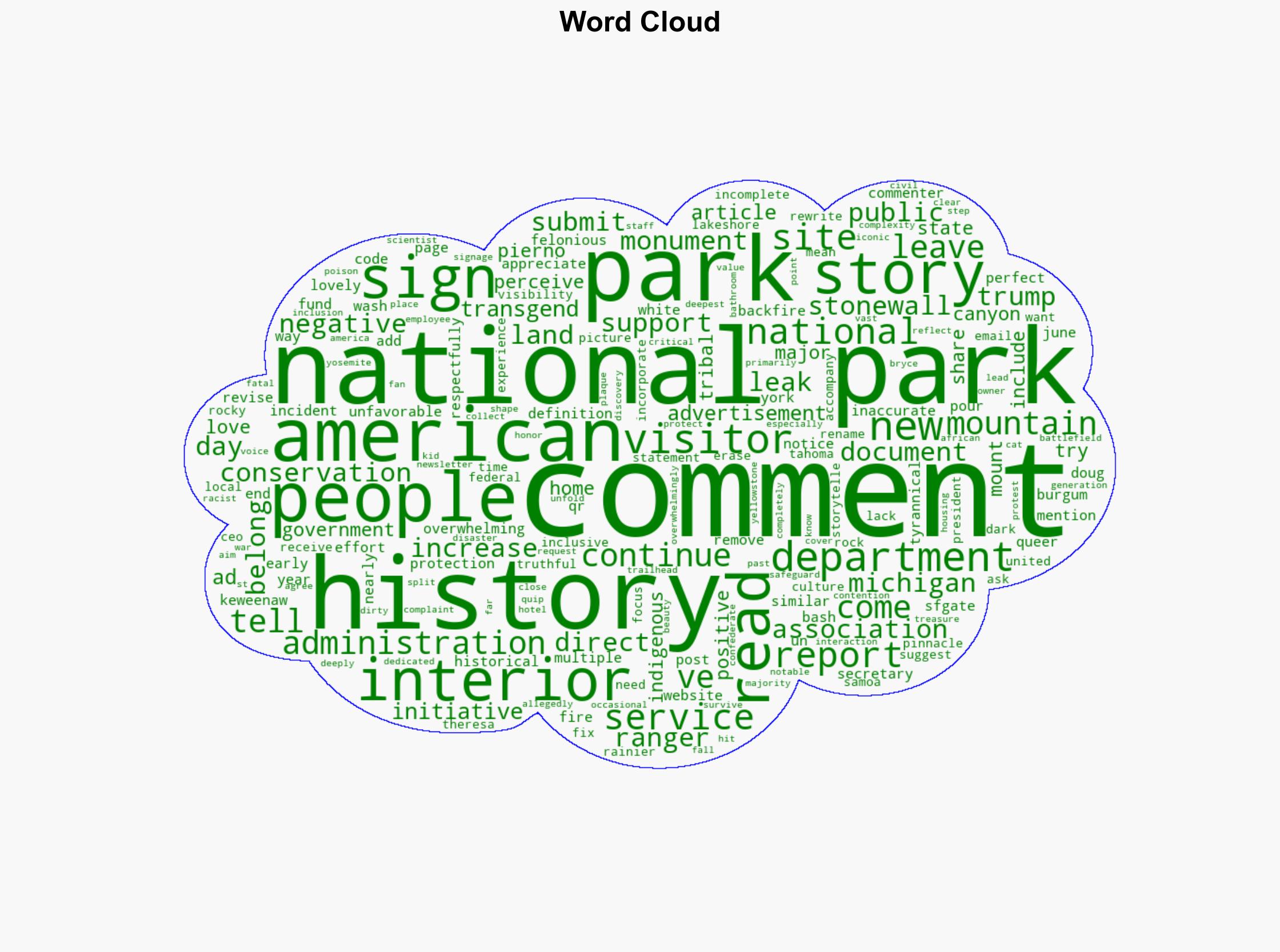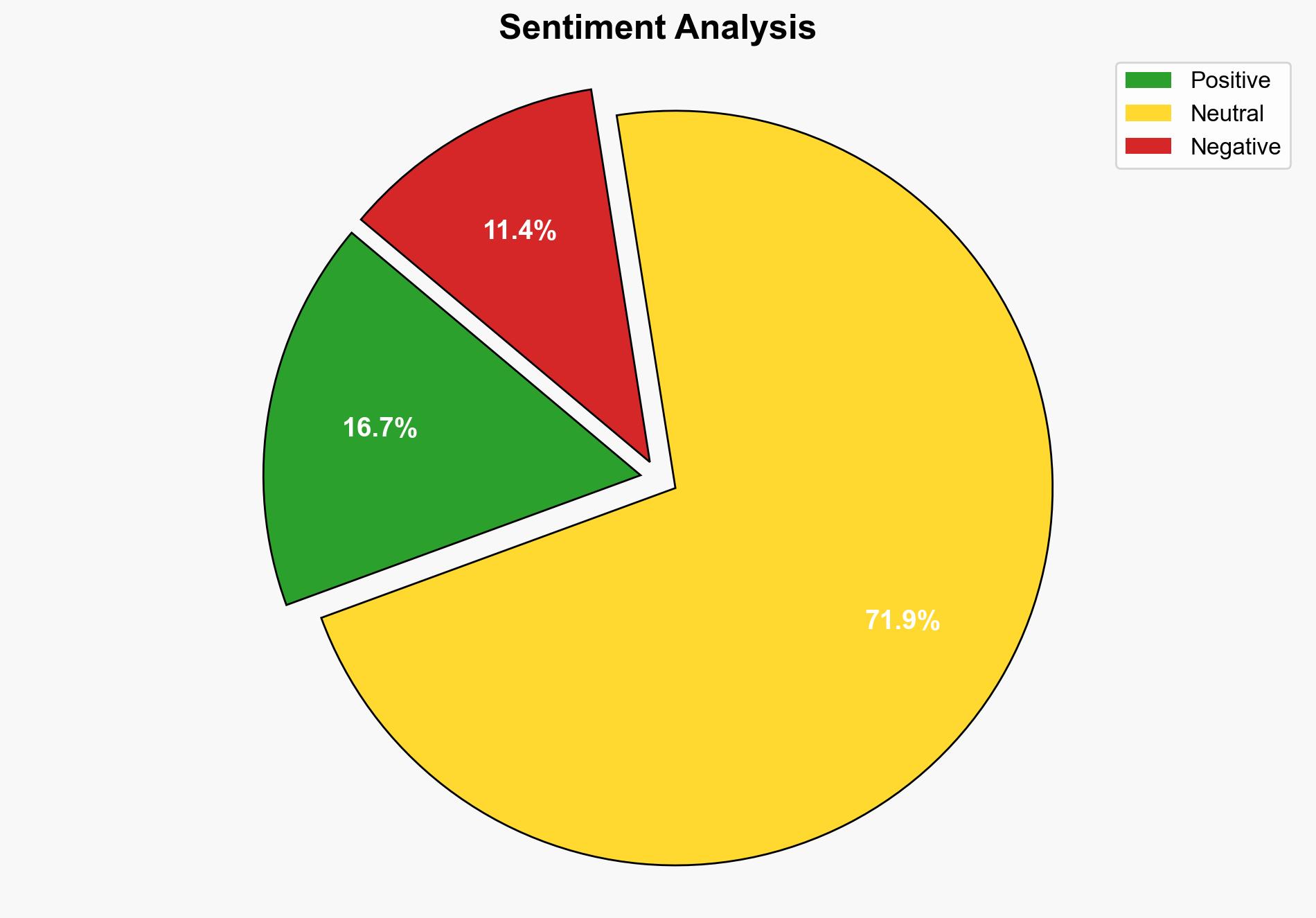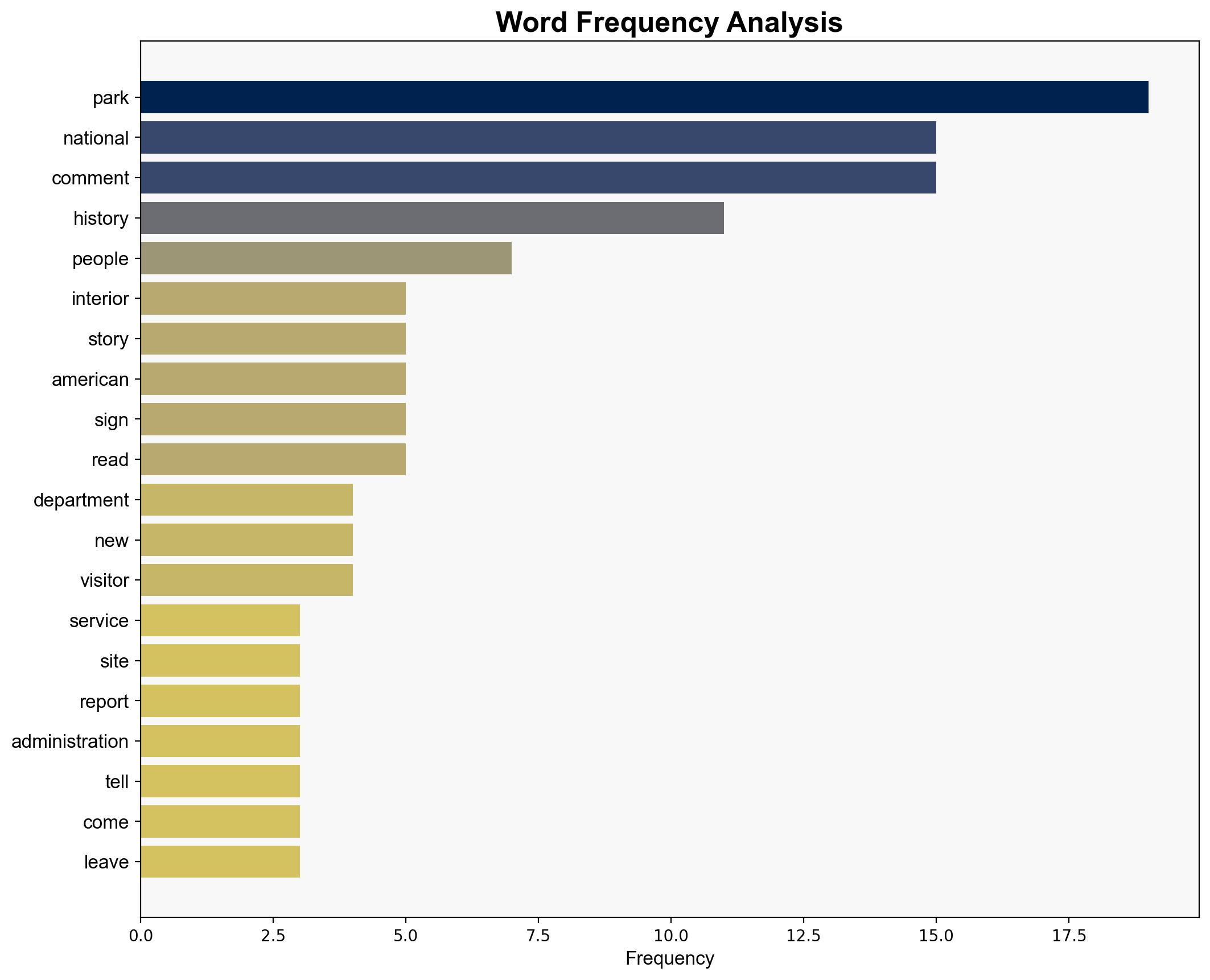‘GO YOURSELVES’ National park visitors slam feds in leaked park comments – SFGate
Published on: 2025-06-27
Intelligence Report: ‘GO YOURSELVES’ National park visitors slam feds in leaked park comments – SFGate
1. BLUF (Bottom Line Up Front)
The leaked comments from national park visitors reveal significant public dissatisfaction with the Department of the Interior’s initiatives to revise historical narratives at national park sites. The majority of comments express support for increased funding and protection of public lands, while criticizing efforts perceived as attempts to alter or erase historical accounts. Recommendations include enhancing transparency and inclusivity in historical storytelling at national parks to align with public sentiment and mitigate backlash.
2. Detailed Analysis
The following structured analytic techniques have been applied to ensure methodological consistency:
Cognitive Bias Stress Test
Potential biases were identified in the interpretation of public sentiment, with a focus on ensuring diverse perspectives are considered in policy formulation.
Bayesian Scenario Modeling
Probabilistic forecasting suggests a high likelihood of continued public opposition if current policies remain unchanged, with potential escalation in public demonstrations or advocacy campaigns.
Network Influence Mapping
Analysis of influence networks indicates that advocacy groups and public figures could amplify dissent, impacting policy decisions and public trust.
3. Implications and Strategic Risks
The public’s reaction highlights a risk of reputational damage to the Department of the Interior and potential political ramifications. The controversy could lead to increased scrutiny and legislative challenges. There is also a risk of diminished public engagement with national parks if perceived as unresponsive to public concerns.
4. Recommendations and Outlook
- Enhance public engagement by incorporating diverse historical narratives and increasing transparency in decision-making processes.
- Conduct scenario-based planning to anticipate and address public concerns proactively. Best case: Improved public trust and engagement. Worst case: Escalation of public protests and policy reversals. Most likely: Gradual policy adjustments in response to public feedback.
5. Key Individuals and Entities
Doug Burgum, Theresa Pierno
6. Thematic Tags
national security threats, public policy, historical narratives, public engagement




